Google Pixel 7 vs. Pixel 5: Should you upgrade?
Since most people hold on to their smartphones for at least two years, a Google Pixel 7 vs. Pixel 5 comparison is more timely than ever, especially if you picked up a Pixel 5 when that phone first came out in 2020. The release of a new Google phone means that it’s time to consider whether you’re due for an upgrade of your older handset.
As you’ll see in our Pixel 5 review, that handset marked the beginning of Google’s efforts to price its flagship phones more competitively with rival handsets, though that came at the expense of processing power. Still, the phone maker’s commitment to a great camera experience remained, as the Pixel 5 benefitted from the addition of an ultrawide angle lens.
Our Pixel 7 review shows a lot has changed in just a couple of years. For starters, Google now uses its own system on chip to power the phone, delivering a series of unique experiences and features powered by machine learning. The Pixels have a completely new design, too, while cameras and the phone’s display have seen their own improvements. All of that makes Google’s latest seem like a compelling upgrade from the older Pixel 5.
Just how compelling is that upgrade really, though? That’s what our Google Pixel 7 vs. Pixel 5 face-off aims to answer.
Google Pixel 7 vs. Pixel 5: Specs
| Google Pixel 7 | Google Pixel 5 | |
| Screen size | 6.3-inch OLED (2400 x 1080) | 6-inch OLED (2340×1080) |
| Refresh rate | 90Hz | 90Hz |
| CPU | Tensor G2 | Snapdragon 765G |
| RAM | 8GB | 8GB |
| Storage | 128GB, 256GB | 128GB |
| Rear cameras | 50MP (f/1.85) main; 12MP (f/2.2) ultrawide | 12.2MP wide (f/1.7), 16MP ultrawide (f/2.2) |
| Front camera | 10.8MP (f/2.2) | 8MP (f/2.0) |
| Battery size | 4,355 mAh | 4,000 mAh |
| Charging speed | 30W wired, 20W wireless | 18W wired, 12W wireless |
| Size | 6.1 x 2.9 x 0.3 inches | 5.7 x 2.8 x 0.3 inches |
| Weight | 6.9 ounces | 5.3 ounces |
Google Pixel 7 vs. Pixel 5: Price and models
After offering regular and XL versions of its flagship phones, Google came out with just a single version of the Pixel 5 — a 6-inch phone available with 128GB of storage. But the very next year, Google was back to its two-model ways, releasing a Pro version of its flagship phone to go with a smaller, less expensive standard edition.
That brings us to the Pixel 7, which features a 6.3-inch screen and comes in either 128GB or 256GB capacities. If you find that phone too constricting, you can always pay up for the 6.7-inch Pixel 7 Pro.
That mention of price brings us to another important change from the Pixel 5 days. Back then, Google was looking to rein in rising smartphone prices, if for no other reason than to distinguish itself from pricier iPhone and Samsung Galaxy flagships. The Pixel 5 debuted at $699, $100 less than what the Pixel 4 cost.
Prices have continued to drop for Google phones. These days, the Pixel 7 starts at $599, and if you want the 256GB version, you pay $100 more. That means you can get a 256GB Pixel 7 for the same price you paid for the lone Pixel 5 model back in 2020. And if you stick with the 128GB version, you can actually get your new phone for less.
Google Pixel 7 vs. Pixel 5: Design
Apart from the Google logo on the back of the phones, you’d hardly know that the Pixel 5 and Pixel 7 came from the same company. The Pixel 5 won raves for its design back in the day, as it was a compact yet sturdy phone with an attractive matte finish. The rear camera array was tucked into upper left corner of the phone, not that far away from a physical fingerprint sensor. Again, that’s a perfectly solid design, though it wasn’t that much different from other Android phones at the time.
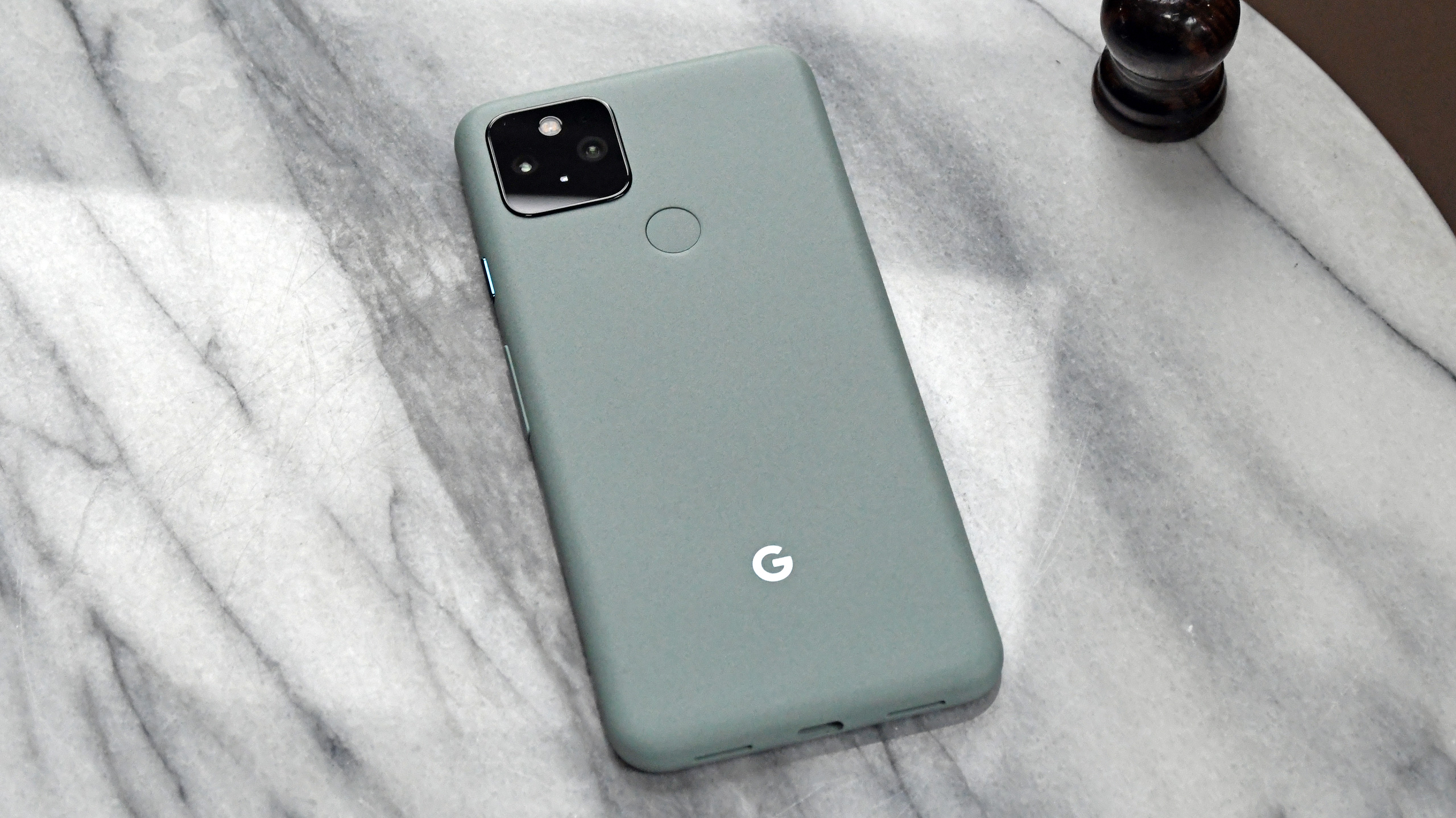
But starting with the Pixel 6, Google changed things up, rolling out a unique look that sets the Pixel apart. Now Google’s phones feature a horizontal camera bar stretching across the back of the phone. Google kept that feature for the Pixel 7 and refined a bit, turning to a matte aluminum material. (The Pixel 7 Pro’s anodized camera bar looks even fancier.)
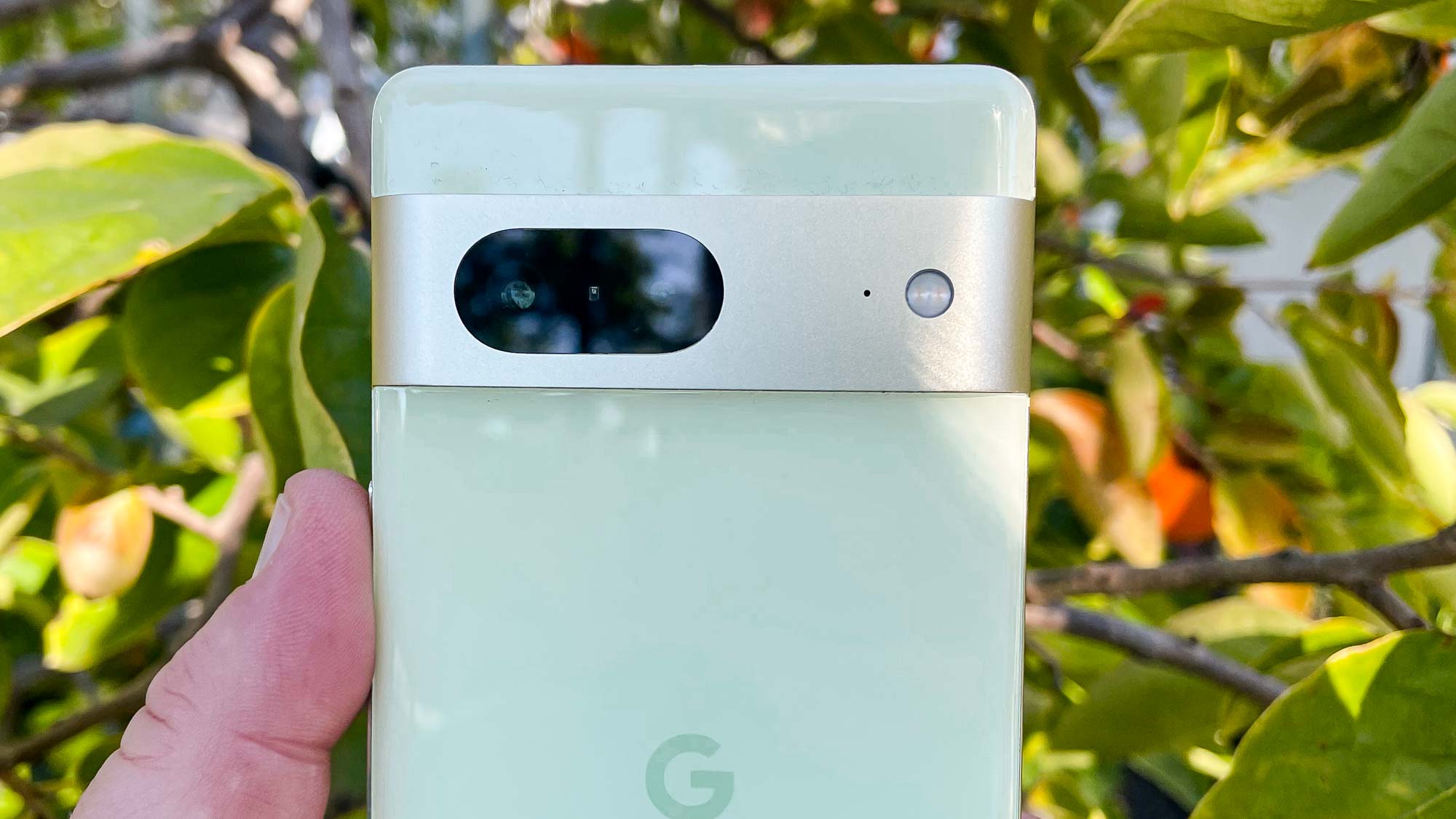
As for that rear fingerprint reader, it’s gone, replaced by an under-display sensor that lets you unlock the phone. The Pixel 7 supports face unlocking, too — a feature that went missing from the Pixel 5.
Google Pixel 7 vs. Pixel 5: Display
The first thing you’ll notice if you stack the Pixel 7 up against the Pixel 5 is the different sizes of their OLED panels. But there are some more significant changes Google’s made in the two years since the Pixel 5’s release.
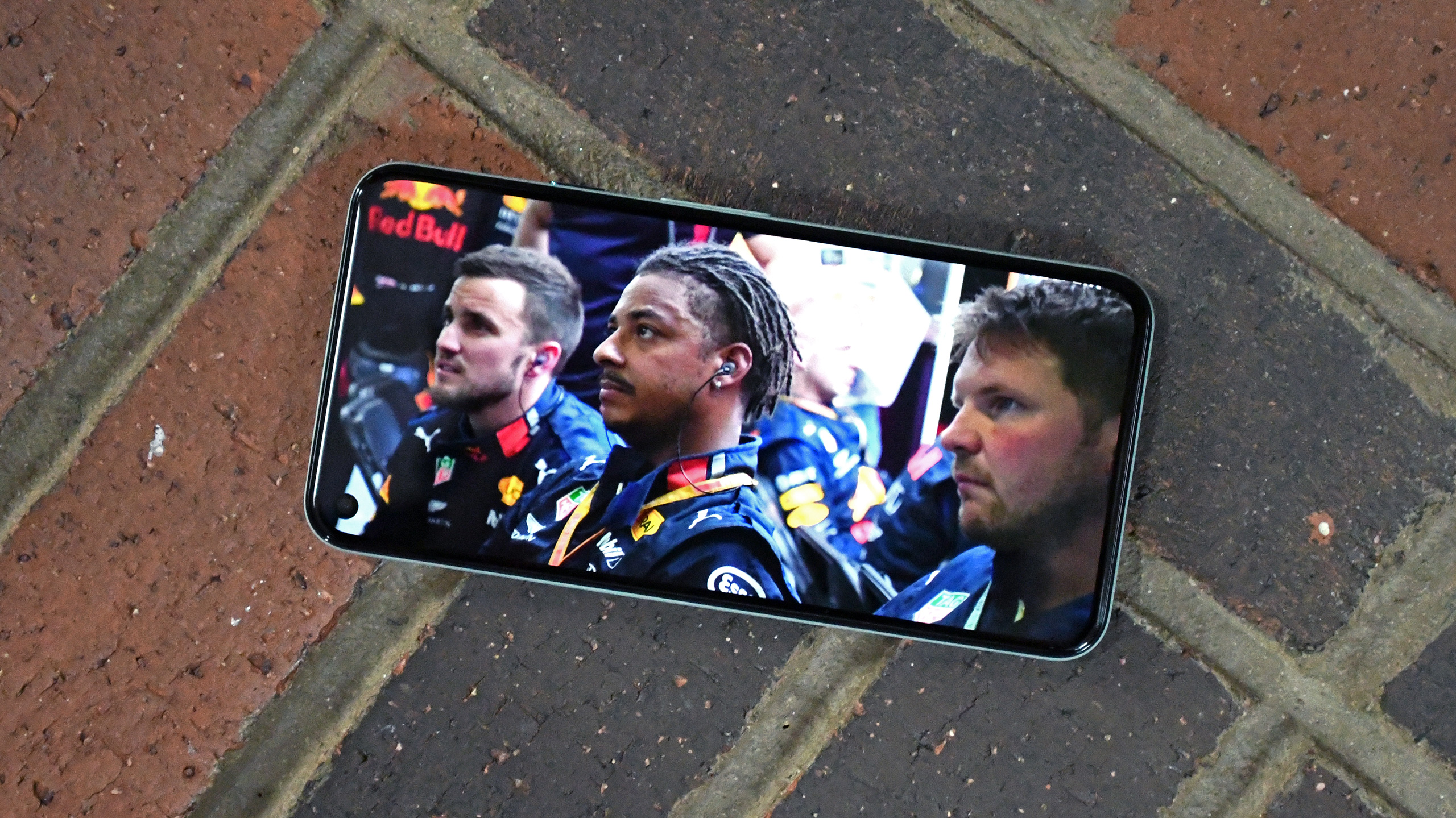
The Pixel 5 was Google’s first phone to embrace faster refresh rates, with a display capable of switching between 60Hz and 90Hz when the on-screen activity called for it. A display with an adjustable refresh rate can show off smoother scrolling text and more immersive graphics than one that’s locked at 60Hz.
The Pixel 7 also sports a 90Hz display, but opt for the Pixel 7 Pro, and you’ll get an even faster refresh rate — 120Hz.The Pixel Pro 7 also can scale all the way down to 10Hz when your screen is more static to preserve battery life.
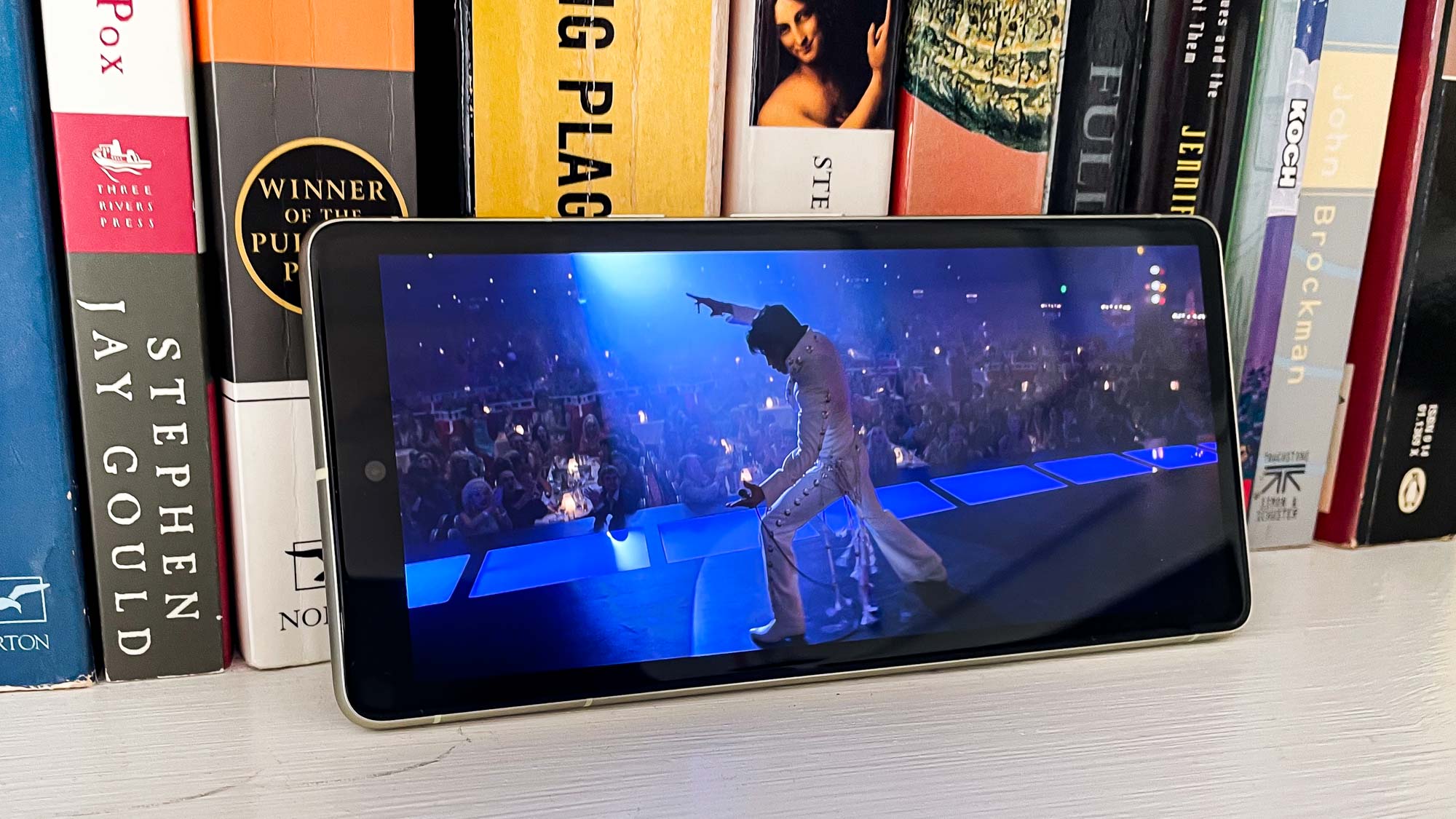
Displays have also gotten brighter since the Pixel 5’s debut. When we reviewed that phone two years ago, we measured its screen brightness at 610 nits. Google made brightness a focus with the Pixel 7 in particular, and it paid off in our testing. That screen reaches 926 nits — not quite the phone’s promised peak brightness of 1,400 nits, but certainly brighter than before.
Google Pixel 7 vs. Pixel 5: Cameras
We don’t have a Pixel 5 on hand at the moment to shoot photo comparisons, but trust us on this one — the Pixel 7 is going to take better shots. Google’s older phone was no slouch in the photo department, but improvements to both hardware and software help the new model land a spot on the list of best camera phones.
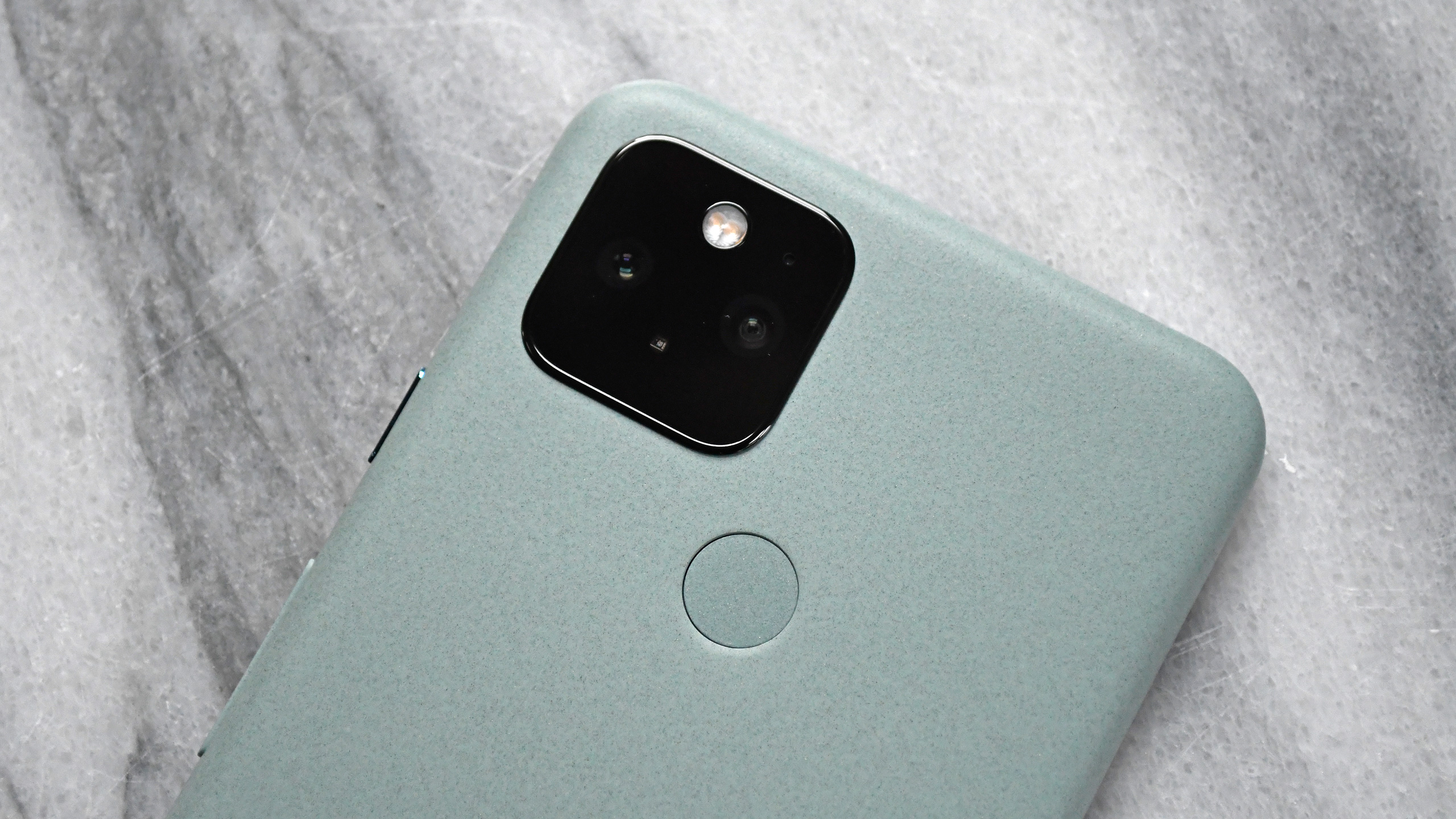
On the hardware front, the Pixel 7 offers a 50MP main camera and a 12MP ultrawide lens. That main shooter certainly out-muscles the 12.2MP sensor on the Pixel 5. The Pixel 5 does have a 16MP ultrawide lens, though we imagine those few extra megapixels won’t make as much of a difference.
The Pixel 7 Pro adds a 48MP telephoto lens with a 5x optical zoom to the camera mix — something neither the Pixel 7 nor the Pixel 5 match. But the SuperResZoom feature on the Pixel 7 gets a boost from the phone’s Tensor chip to use the 50MP main lens and cropping down to a 12.5MP shot when you zoom in.
We’ll go into greater depth on the other changes ushered in by Tensor shortly, but suffice it to say that Google’s system-on-chip gives the computational photography features on the Pixel a real kick in the pants. Shots taken at night are processed faster, blurry faces are corrected, and you can even add stylish background blurs to videos with a new Cinematic Blur. These are things that the Pixel 5’s cameras just aren’t capable of matching.
Google Pixel 7 vs. Pixel 5: Processor
Seeing as how we’re started talking about Tensor, let’s look at what this Google-designed chipset means for performance. And the answer is a bit of a confusing one — that’s not really Tensor’s focus. Google says it started developing its own silicon because wanted smarter phone experiences, not necessarily a faster chip. And while Tensor can keep up with the latest Qualcomm chipsets in our testing, it doesn’t come anywhere close to the iPhone’s A series silicon in terms of speed.
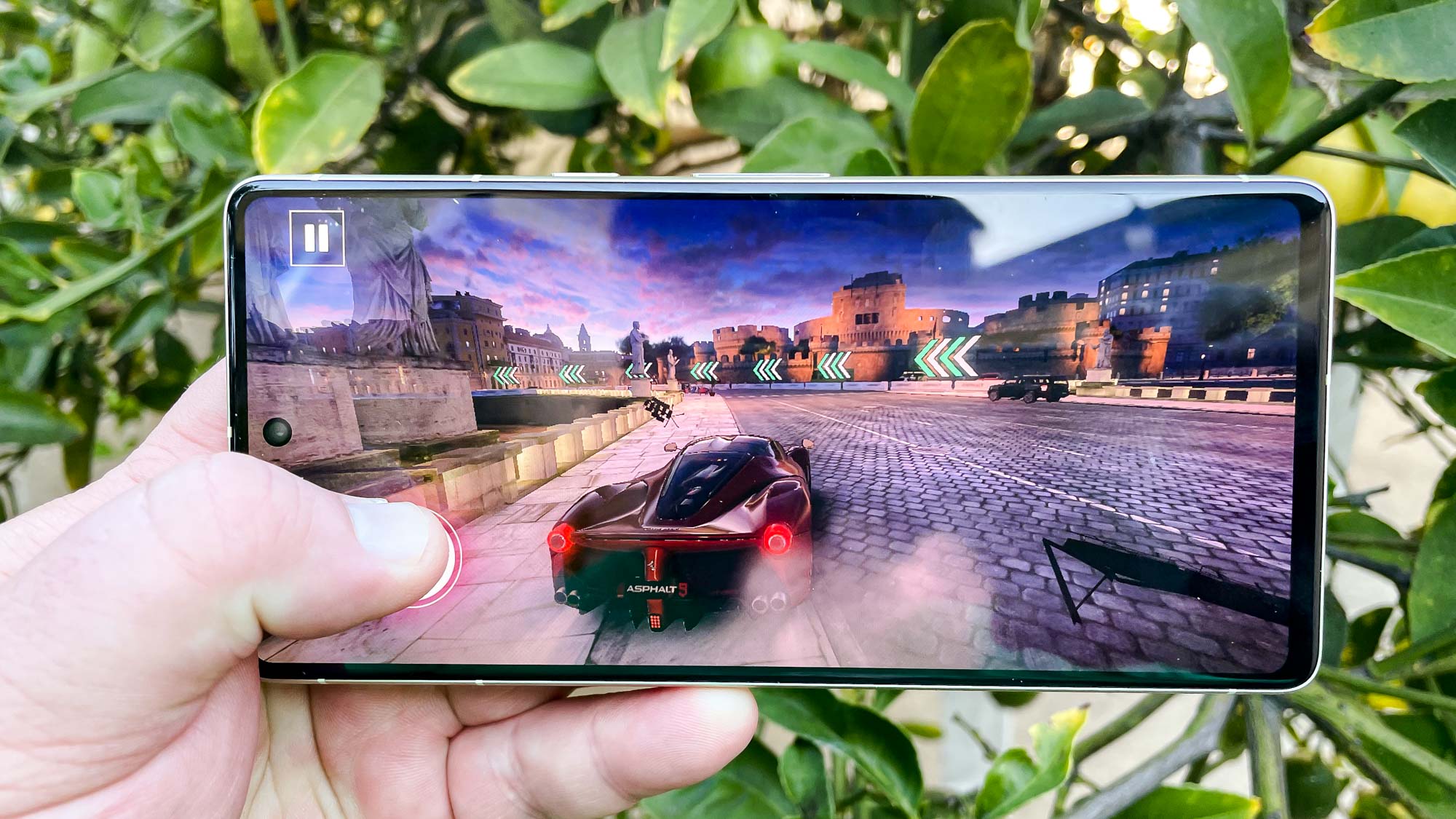
However, you will see a performance boost jumping from the Pixel 5, as that phone used a Snapdragon 765G chipset and not something from Qualcomms 8 series of more powerful silicon. As a result, the Pixel 5 posted a fairly pedestrian Geekbench 5 multicore score of 1,617. The Pixel 7, helped along by a Tensor G2, hit 3,021 on that same test. Graphics performance is better and 5G connectivity is faster on the Pixel 7 as well.
Google Pixel 7 vs. Pixel 5: Battery life and charging
One area where Google might have taken a step back is with the battery life of its recent phones. Certainly, Pixels have struggled on our demanding battery test, in which we have phones surf the web over 5G until they run out of power.
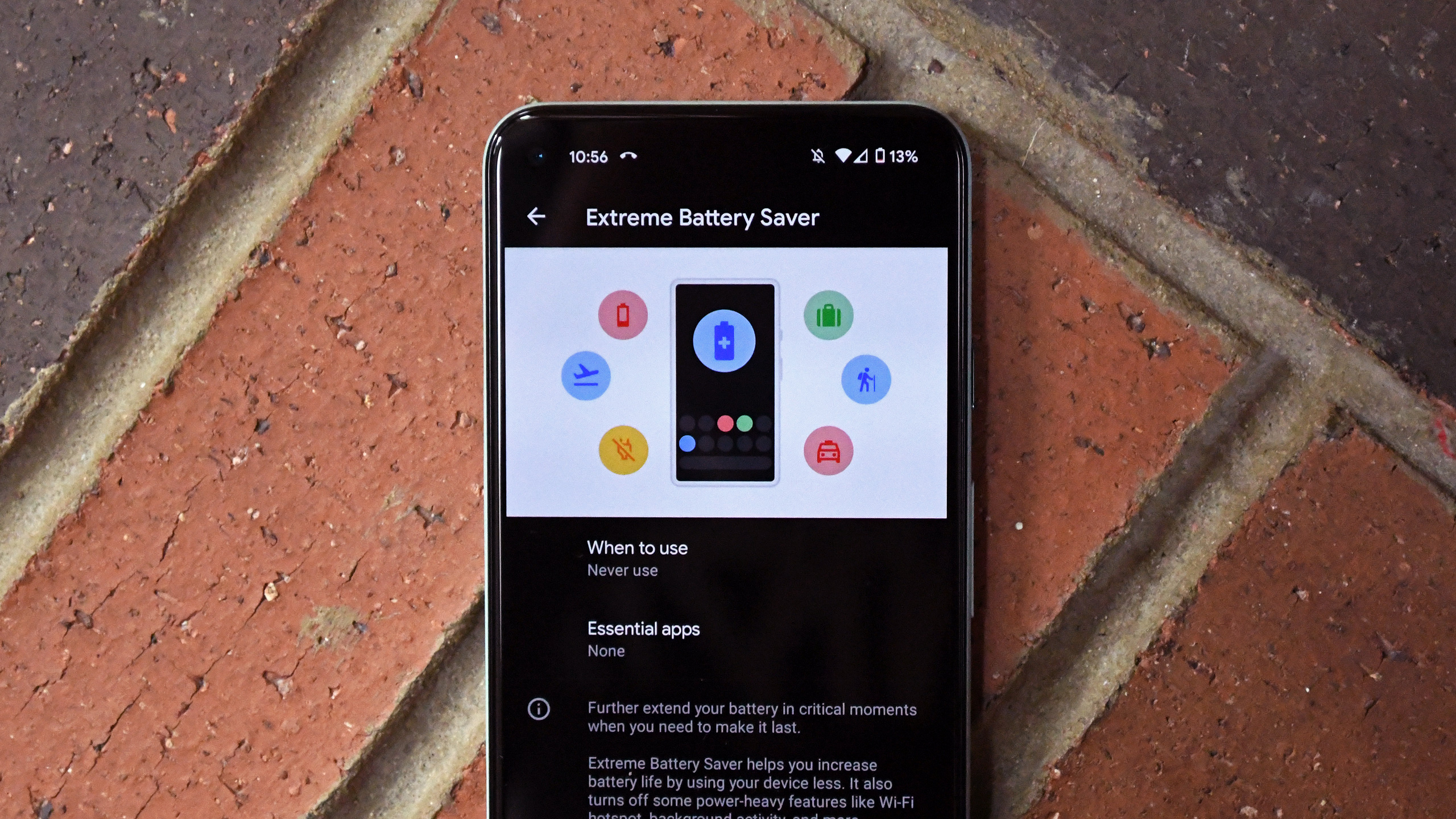
With its screen set to 90Hz, the Pixel 5 lasted for 9 hours and 29 minutes when we tested it two years ago. That’s around 30 minutes less than the average smartphone. But that still manages to beat the Pixel 7’s 7 hour and 21 minute time.
Certainly demands on the battery have increased while the battery powering Google’s flagship phones has only gotten a little bit larger — from 4.080 mAh in the Pixel 5 to 4,335 mAh in the Pixel 7. But battery life is heading in the wrong direction on the Pixel flagships, and we think it’s something Google needs to address.
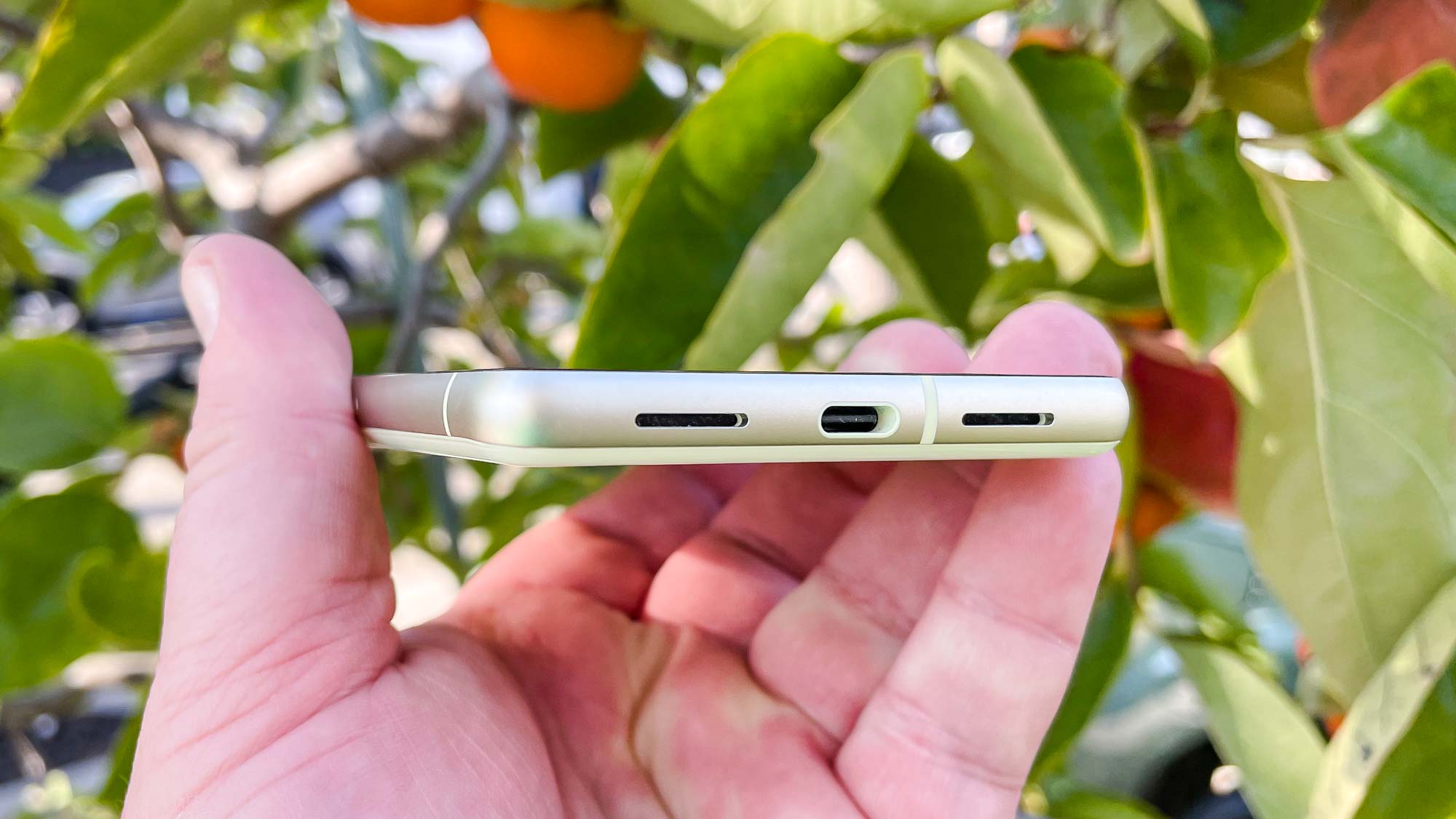
At least the Pixel 7 can charge faster than the Pixel 5. That older phone supported 18W wired charging, but the Pixel 7 speeds things up to 30W. Of course, you’ll need to provide your own adapter, as Google — like many phone makers — no longer includes a charger with its phones.
Google Pixel 7 vs. Pixel 5: Software and special features
Yes, the Pixel 7 ships with a more recent version of Android, but the Android 13 update is available for Pixel 5 owners to download to their devices, so there’s not much of an edge there (outside the fact that the Pixel 5 is running out of guaranteed software updates while the Pixel 7 has only just begun). But that’s not the real focus here.
Rather, it’s the biggest Google Pixel 7 vs. Pixel 5 difference of all — the fact that Tenor introduces a number of exclusive features to Google’s newest phone.

We’ve already talked about some of the photography features that Tensor powers, such as Photo Unblur. Take a blurry photo in your Photos library — even one you shot with a Pixel 5 or a completely different phone — and with a touch of a button, you can apply effects that sharpen up the image. A feature called Magic Eraser, first introduced with the Pixel 6, removes distracting people and objects from photos — again just with a tap.
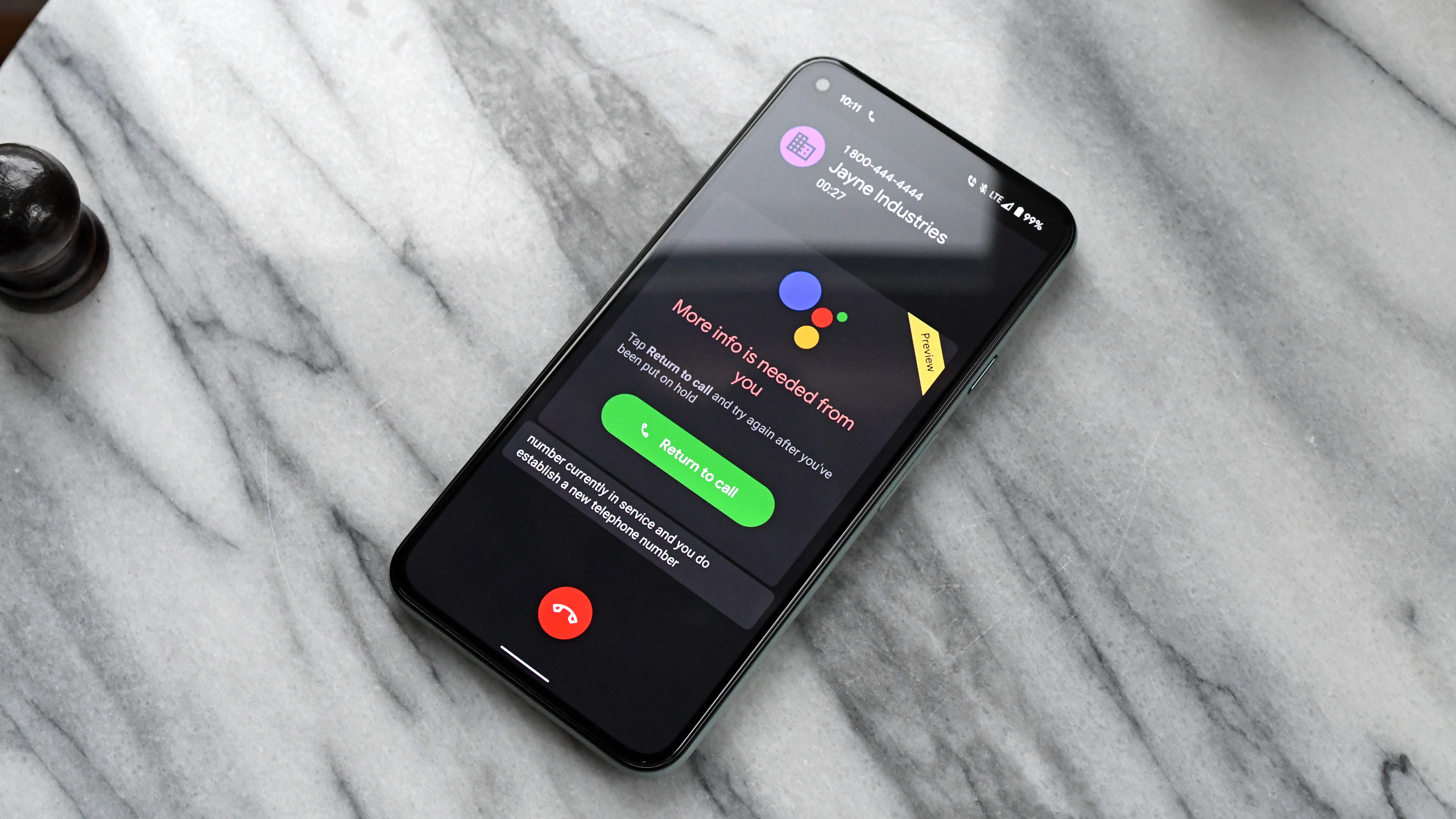
The Pixel 5 included smart features of its own like Hold For Me — the Google Assistant does the waiting on hold, summoning you when it’s time to talk — and the brilliant Recorder app and its built-in transcription. But Tensor ups the ante on those features.
These days, Tensor-powered call management features can produce text versions of phone directories the moment your call begins. The Recorder app is gaining the ability to distinguish between different speakers. And there are other Tensor-fueled features such as audio message transcription in the Messages app and quick phrases that trigger simple tasks without requiring you to say “Hey, Google” first. It’s just a whole new world with the Pixel 7, as smart as some Pixel 5 features were.
Google Pixel 7 vs. Pixel 5: Should you upgrade?
Normally, I’m a big believer in waiting as long as possible to upgrade to a new phone, squeezing as much life out of your current handset as possible. That means three years of use at a minimum, and maybe even four, if we’re talking devices from Apple or Samsung where software support is more extensive.
But the changes Google has made to its flagship phones in the last two years are significant. Forget the processing jump in going from a Snapdragon 765G to a Tensor G2, there’s also the host of new Tensor-powered features that likely won’t trickle down to the Pixel 5 because they rely on Google silicon. Even though the Pixel 5 remains a stellar camera phone, your pictures will be better with a Pixel 7, too.
The lower cost of the Pixel 7 — remember, this phone costs less than what you paid for the Pixel 5 — also makes it easier to upgrade now rather than hold out for one more year. If you can find a discount through one of the best Pixel 7 deals, upgrading from your Pixel 5 becomes an even easier decision.
For all the latest Technology News Click Here
For the latest news and updates, follow us on Google News.
